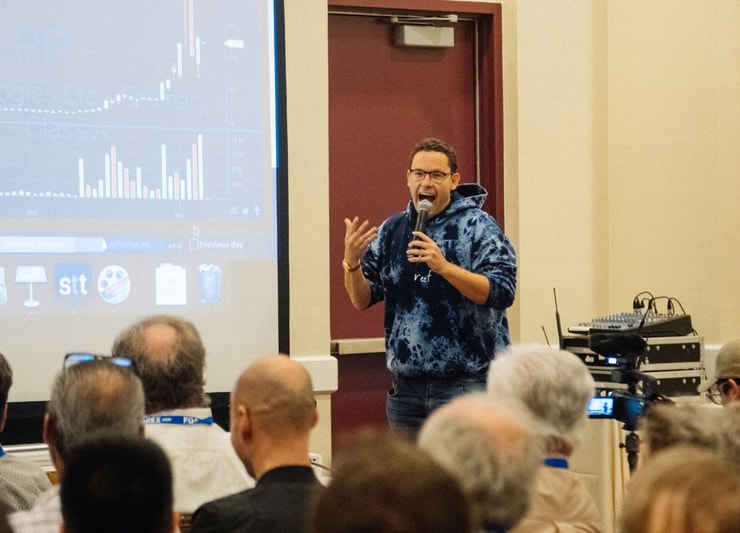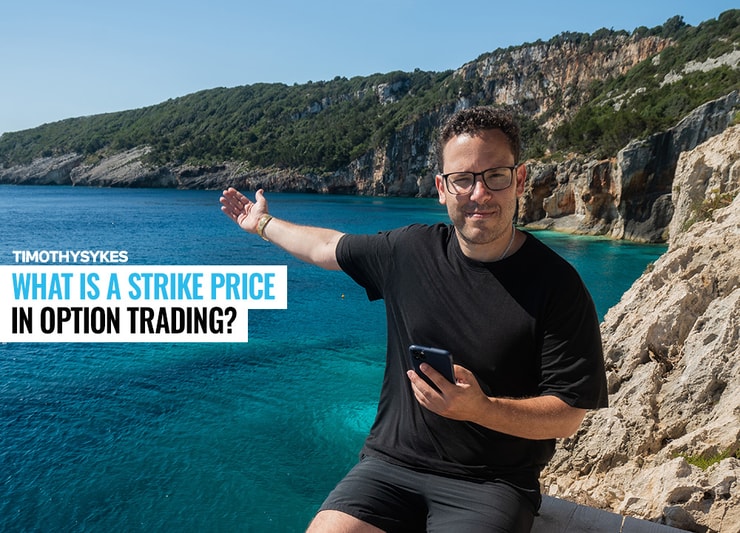A strike price in options trading is the minimum price point at which you can execute the option. It’s one of the most basic concepts when it comes to trading options contracts.
Building your knowledge account is always a good thing. Even if you’ve got a basic grasp of the strike price concept, a refresher won’t hurt. Who knows, you might learn something new.
This post will cover the basics of strike price and how to set a good strike price. I’ll also give you an example of strike prices in action. Let’s get into it!
Table of Contents
What Is a Strike Price?
A strike price defines when an option holder can trade the contract’s underlying security. That means the market price has to reach the strike price if you want to exercise the options contract.
Options contracts are usually listed with various strike prices. These prices can be above or below the underlying asset’s market value at the time the option is written:
- Strike prices above the asset’s price at contract inception are usually call options.
- Strike prices below the asset’s price at contract inception are usually put options.
Exchanges generally sell options at a range of strike prices. Different brokerage services and exchanges may have different strike price intervals. The interval between strike prices is called “strike width.”
Here’s an example of a strike width:
Put options for Company X stock are sold at $107.50, $105, $102.50, and so on. The interval between strike prices — the strike width — is $2.50.
Learning the lingo is one of the most important things in options trading. Check out my guides on basic options trading terminology like margin and buy-to-open.
Relationship Between a Strike Price and an Underlying Security

2025 Millionaire Media, LLCThe relationship between a strike price and its underlying asset is its moneyness. What does moneyness mean? It’s the value of an option in its current state.
An option is considered ‘in-the-money’ if it can be exercised — if its current price has exceeded its strike price. It’s ‘out-of-the-money’ if it cannot be exercised — if the current price hasn’t reached the strike price. It can also be ‘at-the-money’ if the current price matches the strike price.
Here’s an illustration of an option’s moneyness. Say, you have three call options for Company Y stock with the same time to expiration. They have the following strike prices:
- Contract 1: $90
- Contract 2: $100
- Contract 3: $110
For this example, let’s say the market price at expiration for Company Y stock is $100 per share. In this case:
- Contract 1 is in the money because the option can be exercised for a profit.
- Contract 2 is at the money because it’s exactly or really close to the current share price. It can be exercised, but at this point it’s essentially worthless.
- Contract 3 is out of the money — the option cannot be exercised.
Out of the money options aren’t necessarily worthless. They can have value if the asset has sufficient volatility and time until expiration. You can sell the contract to somebody else who still believes the asset price might hit its strike price.
Does your options trading strategy factor in taxes? Learn more about the tax implications of options trading.
How to Choose a Strike Price in Options Trading

2025 Millionaire Media, LLCChoosing your strike price is one of the most important things for an options buyer.
You can’t just pick a random price and expect to make successful trades. Here are three things to do when choosing strike prices:
1. Consider Your Strategy
A well-made options strategy should help you decide when and at what price you enter an options trade. Your strategy also defines your risk tolerance. Examining your strategy means you can set strike prices matching your risk appetite.
2. Monitor Volatility and Implied Volatility
The underlying asset’s volatility impacts an option’s value. It also influences its moneyness.
Meanwhile, implied volatility influences the contract’s premium. The higher the implied volatility, the more options owners have to pay.
More Breaking News
- GameSquare Holdings: A Surge or Mirage?
- High Hopes as Innoviz Technologies Eyes Market Expansion
- ProKidney’s New Move: A Stock Reshuffle?
3. Do the Research
Studying hard and doing your homework are among the most important things in trading. Analyze the assets you’re buying options for to get a good feel of how their prices move.
You should be learning about chart patterns from experienced traders — like my former student Mark Croock. Mark has racked up $4 million in career earnings, mostly from trading options. He’s done this by adapting my penny stock trading strategies to options.
Now he’s got his own mentorship program, called the Evolved Trader. Check it out for strategy sessions, trade alerts, a great chat room, and more!
Any kind of trading is risky, but certain options strategies have much more risk than others. Learn more about why options trading is risky in my article.
Strike Price Scenario Examples

2025 Millionaire Media, LLCThe following strike price scenarios will give you an idea of how professional options traders set their strike prices.
I’ll give you two strike price scenarios as an options holder. One for call options and one for put options.
Let’s take a look:
Call Option Scenario
Company Y’s stock price is $5 per share. You expect it to rise within the next month, so you buy a call option to buy 100 shares at $5.50 each.
That means your strike price is $5.50.
If Company Y’s stock price goes above $5.50 — if it’s in the money — you can exercise the option. That means you can buy 100 shares of stock at the strike price and make money by selling it at a higher price.
But if you’re wrong and Company Y’s stock price doesn’t reach the strike price, you can ignore the contract. The only money you’ll lose is the option premium.
Put Option Scenario
Let’s say you predict Company Y’s stock price — currently at $5 — will fall in the coming month. You buy a put option to sell 100 shares of Company X stock at $3 each.
Your strike price here is $3.
However low Company X’s stock prices go, you can still sell your optioned shares at $3.
If the stock doesn’t hit the strike price, you can either trade the option or allow it to expire worthless.
Learn more about how options trading works in this article.
Strike Price vs Spot Price
The main differences between strike price and spot price are timing and fluidity. The word “spot” in trading and finance usually means “right now,” so a spot price represents the current market price. Meanwhile, a strike price represents the price when your option contract can be exercised.
Spot prices are fluid. They change according to market conditions.
Strike prices are static. You set it for a certain number, and you won’t be able to change it.
Strike Price vs Market Price

2025 Millionaire Media, LLCMarket price and spot price can be used interchangeably. They both represent the current price of an asset or option on the market. So, the differences between strike price and market price are timing and fluidity.
Strike Price vs Exercise Price
Strike price and exercise price refer to the same thing. So, there are no differences between these two terms.
Key Takeaways
A strike price determines when you can exercise your options contract. You want current market prices — the underlying asset’s spot price — to be above the strike price for call options.
Meanwhile, you want market prices to fall below the strike price for put options. If market prices don’t reach the strike price when the option expires, it’ll expire worthless.
Understanding how to set the right strike price is essential when trading options.
It’s just one part of a self-sufficient trader’s strategy.
You should also follow these trading tips:
- Don’t copy other people’s trades and alerts. Every person trades differently, and what works for them might not work for you.
- Learn from experienced options traders. Make sure they show their trades, like Mark does.
- Make watchlists. Spot new trading opportunities in the options market by doing research. Sign up for my NO-COST weekly watchlist here.
- Record your trades and review them regularly. This helps you improve your skills and fix your mistakes.
Consider articles like this your education. I hope this is just the start!
Did you pick up any tips about how to set your strike price? Let me know in the comments!








Leave a reply